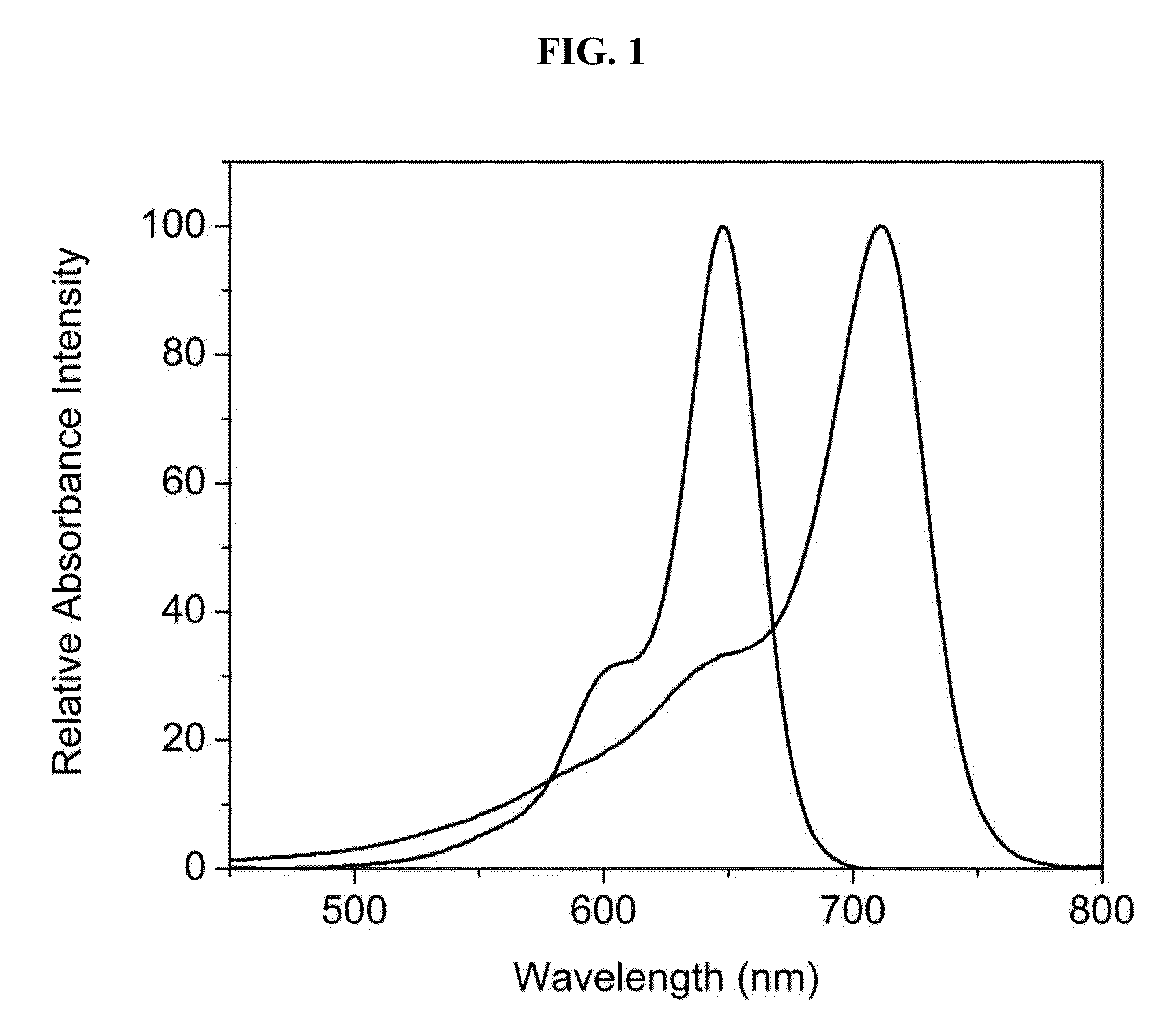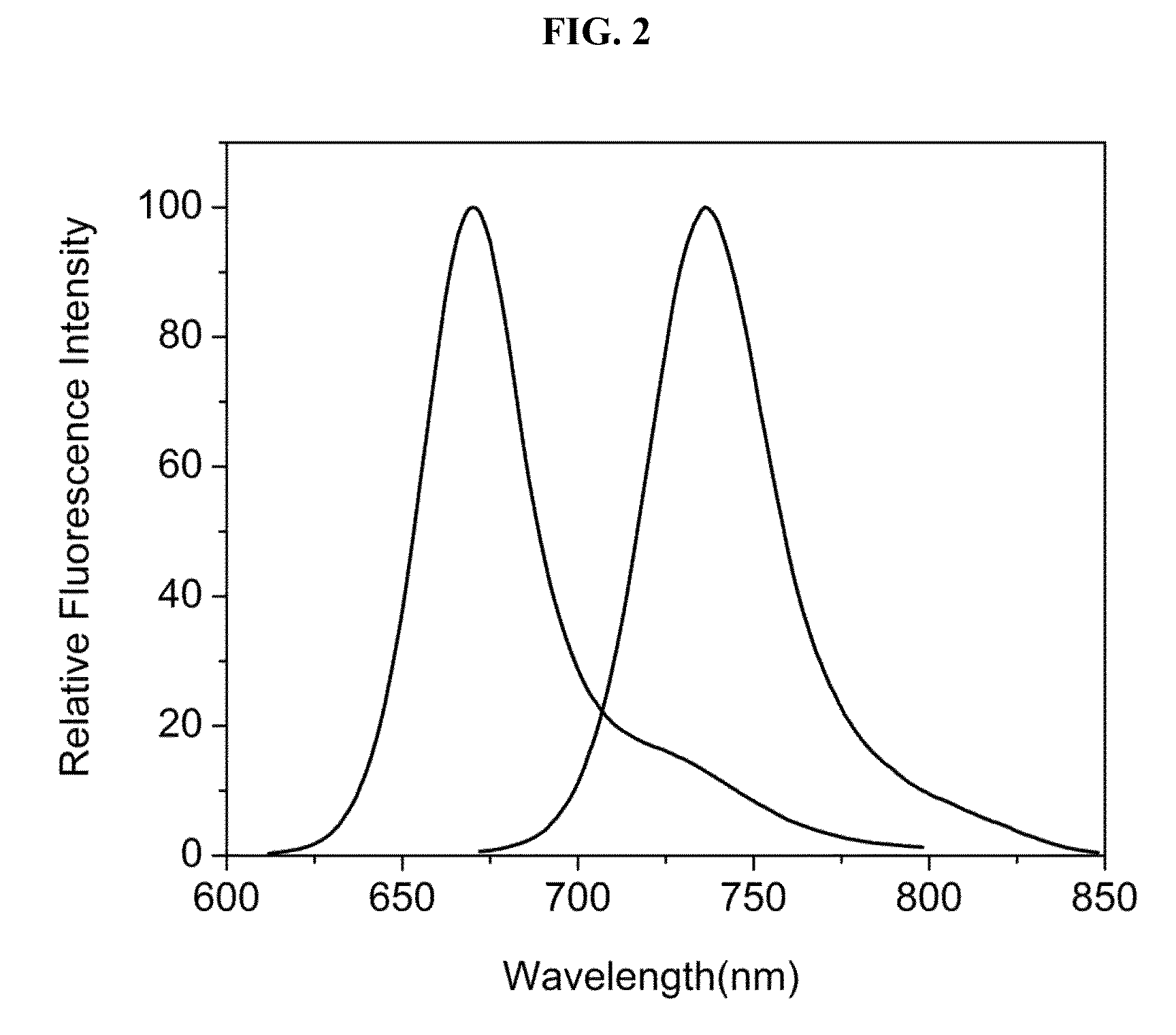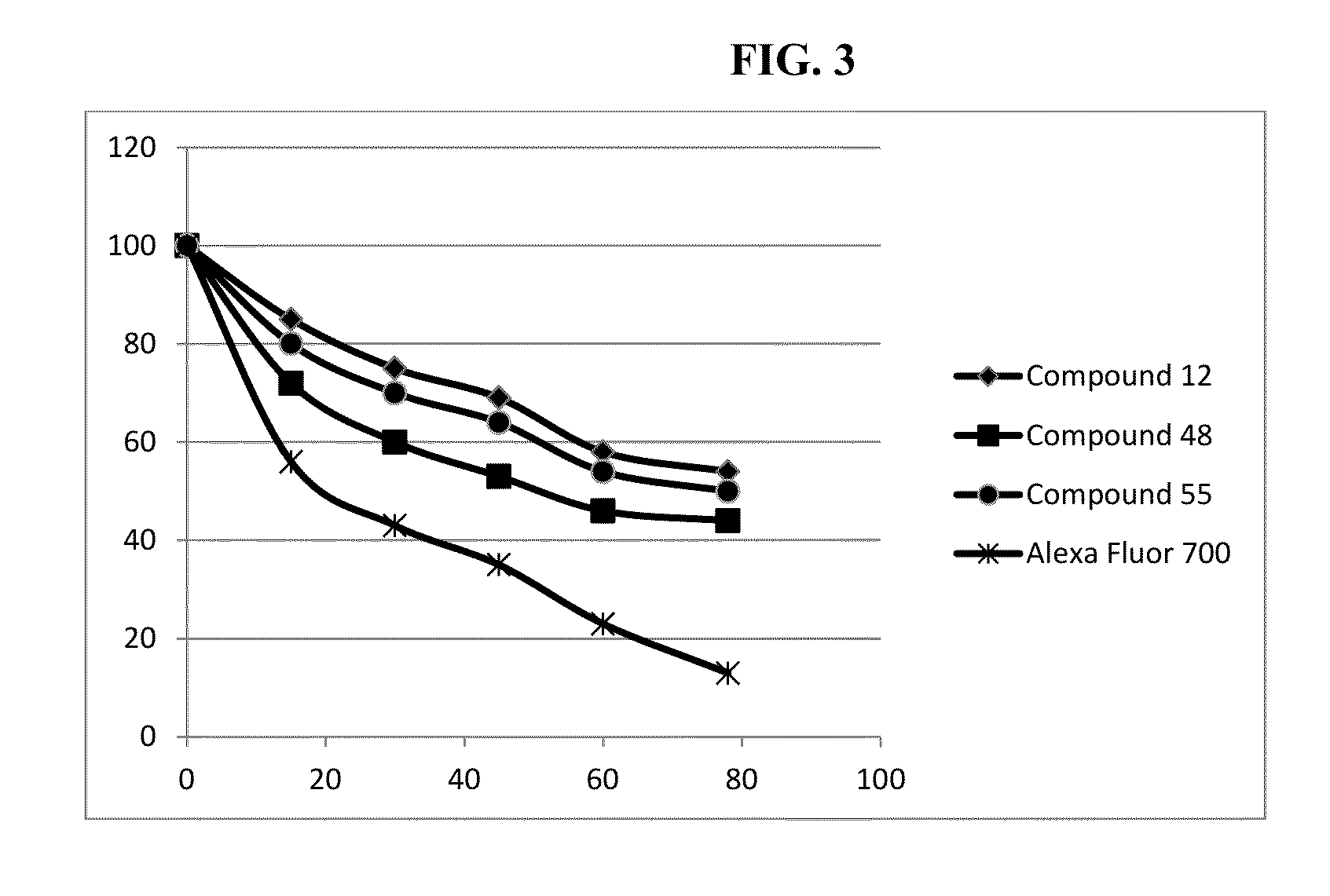Hydroxamate substituted azaindoline-cyanine dyes and bioconjugates of the same
a technology of azaindoline and cyanine, which is applied in the field of hydroxamate substituted azaindolinecyanine dyes and bioconjugates of the same, can solve problems such as interference with accurate determination, and achieve the effect of facilitating their use in such methods
- Summary
- Abstract
- Description
- Claims
- Application Information
AI Technical Summary
Benefits of technology
Problems solved by technology
Method used
Image
Examples
example 1
Preparation of Compound 2
[0423]
[0424]To a solution of 2,5-dibromopyridine (10 g, 42 mmol) in 1-butanol (50 mL), hydrazine hydrate (80%, 13 mL, 211 mmol) is added at room temperature. After 6 hours at 115° C., the mixture is concentrated to around 15 mL. The white solid is formed and collected by filtration, washed by 30 mL cold water. After dried in the air overnight, Compound 2 (8.0 g) is obtained as an off-white solid.
example 2
Preparation of Compound 3
[0425]
[0426]To a solution of Compound 2 (20 g, 106 mmol) in benzene (100 mL), 3-methyl-2-butanone (22.9 mL, 212 mmol) is added at room temperature. The mixture is refluxed overnight using a condenser equipped with a Dean-Stark trap. The mixture is concentrated and the residue is heated in polyphosphoric acid (125 g) at 140° C. for 45 min. The mixture is poured into ice water (500 M) with stirring. NaOH (5 N) is added to neutralize the solution to pH=8.0, and extracted with EtOAc (500 mL). After drying over Na2SO4, the residue is purified on silica column to give Compound 3 (7.6 g) as a yellow solid.
example 3
Preparation of Compound 4
[0427]
[0428]To a solution of Compound 3 (2 g, 8.36 mmol) in dry THF (40 mL) at −78° C., n-BuLi (2.5 M, 7.4 mL, 18.4 mmol) in hexanes is added dropwise. After 1 hour at −78° C., CO2 gas is bubbled through the reaction mixture and kept bubbling at −78° C. for 1 hour. HCl solution (1 N, 50 mL) is added to quench the reaction, and the crude material is purified by HPLC to give Compound 4 (1 g) as a light brown solid.
PUM
| Property | Measurement | Unit |
|---|---|---|
| absorption maximum wavelength | aaaaa | aaaaa |
| fluorescence maximum wavelength | aaaaa | aaaaa |
| pH | aaaaa | aaaaa |
Abstract
Description
Claims
Application Information
 Login to View More
Login to View More - R&D
- Intellectual Property
- Life Sciences
- Materials
- Tech Scout
- Unparalleled Data Quality
- Higher Quality Content
- 60% Fewer Hallucinations
Browse by: Latest US Patents, China's latest patents, Technical Efficacy Thesaurus, Application Domain, Technology Topic, Popular Technical Reports.
© 2025 PatSnap. All rights reserved.Legal|Privacy policy|Modern Slavery Act Transparency Statement|Sitemap|About US| Contact US: help@patsnap.com



